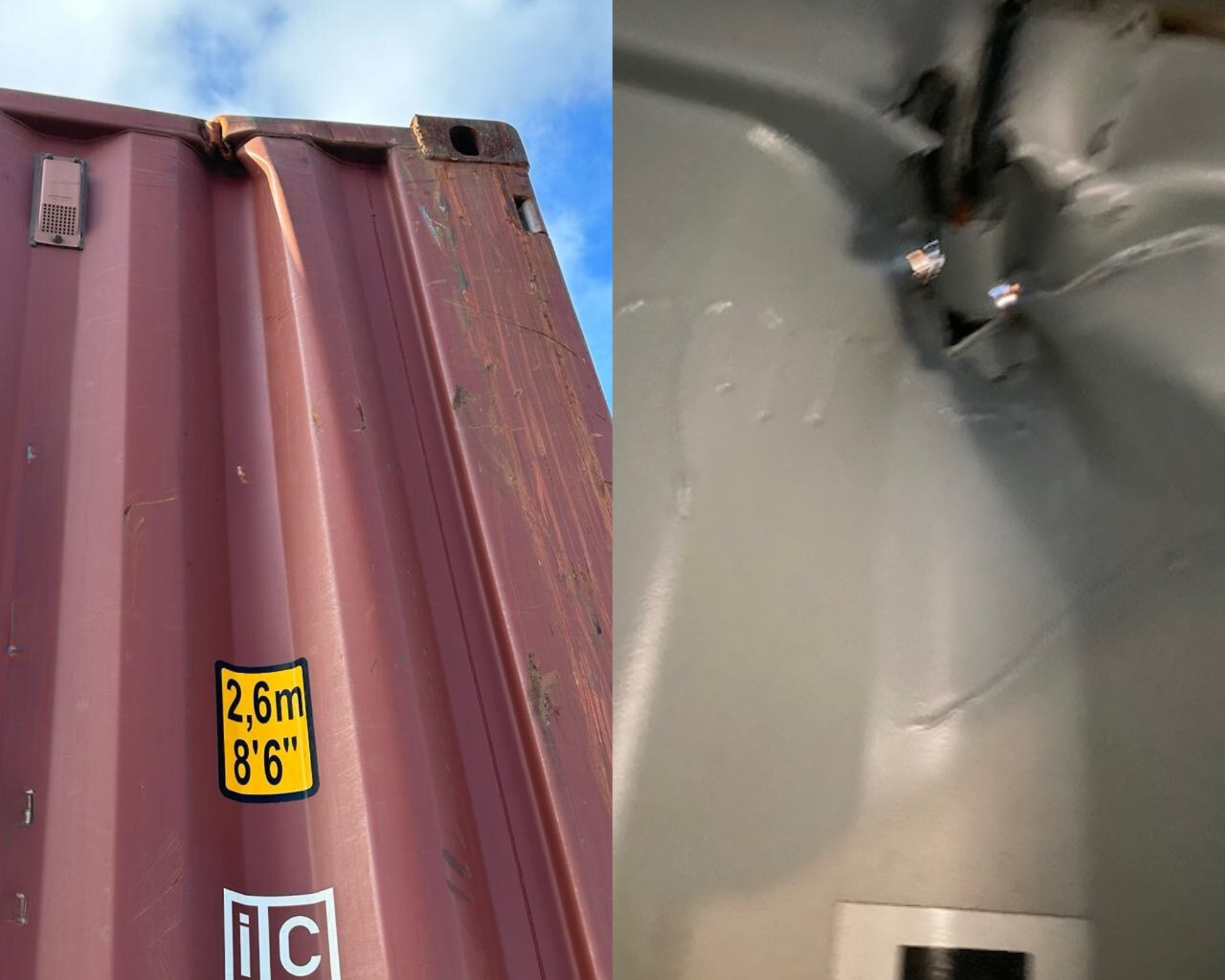What to Look for When Inspecting a Damaged Container

Notice of Loss, Your First Step in Filing a Cargo Claim
March 29, 2024
3 Seconds to Save Thousands! Reefer Drain Checks Routine
April 12, 2024Physical damage is perhaps the most apparent and widely recognized form of cargo damage which usually stems from a damaged container. It is estimated that one out of four containers attain some form of physical damage. It occurs when goods suffer visible harm, such as dents, scratches, breakage, or spoilage. Factors like improper inadequate handling during loading and unloading operations, road, rail accidents during transportation can contribute to physical damage. Cargo contamination with varmints, gas, or odor is also considered physical damage.
Cargo damage can be stressful, and arguing with the shipping company can waste valuable time and energy. Instead, focus on gathering evidence to support your cargo claim recovery. Taking clear photos of the damaged cargo with your phone is a quick and effective way to document the issue. Don’t worry about memorizing every detail – the photos will speak for themselves.
But where exactly should you look for damage? Recoupex, your cargo claims recovery expert, has created a helpful checklist to guide you. This checklist outlines both internal and external areas of the container that are most susceptible to damage, making the inspection process efficient and thorough.
External Container Inspection Checklist
- Container Safety Approval Plate (CSC Plate): Verify that the CSC plate is present and valid. This plate indicates the container meets international safety standards.
- Holes: Look for any holes, especially on the top of the container, as these can allow moisture or pests to enter and damage your cargo.
- Doors: Ensure the doors function properly and close securely. Check for any visible damage to the door hinges or locking mechanisms.
- Tilts/Tarps: If your container has a tilt function or uses a tarp cover, inspect these elements for tears, rips, or loose fastenings that could compromise cargo protection.
- Open Top Containers: For open top containers, make sure all roof bows (supports) are present and secure to prevent collapsing under cargo weight.
- Structural Defects: Inspect the container’s body for any serious structural issues like cracks or tears in the corner fittings, side rails, or other critical areas.
Internal Container Inspection Checklist
- Cleanliness: The container’s interior should be free of debris, dirt, or lingering odors that might contaminate your cargo.
- Dryness: Check for any signs of moisture or leaks inside the container. A damp environment can damage cargo and promote mold growth.
- Infestation: Look for any evidence of pests like insects or rodents, which could infest your cargo during transport.
- Taint-Free: Ensure the container doesn’t have any lingering odors or residues from previous cargo that might contaminate your shipment.
- Watertightness: While a full water test might not always be feasible, you can do a quick visual inspection. Close both doors and look for any light entering the container from outside. Light penetration indicates potential water ingress points.
Additional Tips
- Take photos of any damage or issues you find during the inspection. This documentation will be crucial if you need to file a cargo claim.
- If you’re unsure about anything during the inspection, don’t hesitate to consult a professional cargo surveyor for a more thorough assessment.
By following these checklists and tips, you can ensure your cargo container is in good condition before shipping, minimizing the risk of damage during transport. And if the inevitable cargo damage happens, you are well equipped with the proof you need to recover your claim.
Recoupex is a hub of transport lawyers – experts in cargo claims. We assess your case quickly. We have successfully recovered claims from Maersk, Sealand, Hapag-Lloyd, Mediterranean Shipping Company – MSC, CMA CGM, and other carriers.



